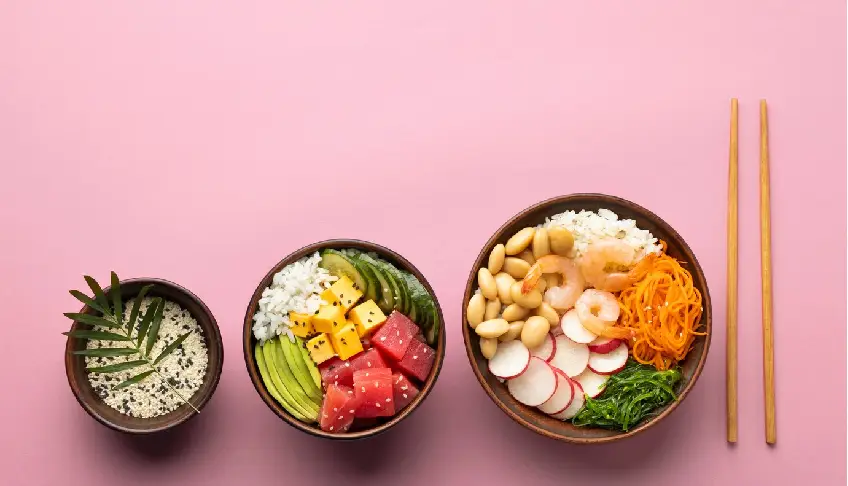The Art of Balance: How Japanese Cuisine Celebrates Simplicity and Harmony
The Art of Balance: How Japanese Cuisine Celebrates Simplicity and Harmony
Japanese cuisine is often admired for its delicate flavours, elegant presentation, and, most of all, its philosophy of balance. At the heart of Japanese culinary traditions lies the principle of harmony—both in the ingredients and the way they are combined. This notion has had a hand not just in how Japanese dishes are prepared, but in how they are consumed. Whether the meal is as simple as a bowl of miso soup or as complicated as a sushi plate, the emphasis on balance continues to be the focal point of the Japanese dining experience, and it has started to inform Australian appreciation of Japanese cuisine as well.
- Simplicity as a Core Value
One of the fundamental aspects of Japanese cuisine is simplicity. Unlike many other culinary traditions, Japanese cooking avoids overwhelming the palate with too many ingredients or complex preparations, allowing the natural flavours of each ingredient to shine through. Freshness is paramount and cuisine is typically prepared with minimum spice to highlight the natural flavours of vegetables or protein. They often consist of a few carefully chosen items, such as a rice bowl with pickled vegetables or miso soup, with each component chosen to provide a pleasing balance of flavour, texture, and colour.
- The Role of Seasonality
Seasonality has a significant impact on Japanese cuisine, with dishes reflecting the time of year through taste, colour and presentation. Winter dinners typically feature warming root vegetable flavours, whilst spring dishes feature fresh herbs or shellfish. This respect for seasonality enriches flavour and promotes balance by synchronising food with nature’s cycles so that chefs can prepare dishes utilising ingredients in their prime freshness, encouraging a greater connection between the eater and the meal.
- Balancing Flavours and Textures
Japanese cuisine is built on balancing five key flavours: sweet, salty, sour, bitter and umami. For example, in sushi, the sweetness of vinegar-soaked rice is complemented by the saltiness of soy sauce and the richness of fish. Likewise, miso soup combines the savory flavor of miso with the soft sweetness of dashi broth to create a filling meal.
Texture is also important – from the crunch of tempura to the soft, melt in your mouth sensation of sashimi. The precise selection and preparation of ingredients to provide a combination of textures and flavors makes for a more enhanced dining experience, each bite satisfying and interesting.
- Minimalism in Presentation
The concept of balance also applies to the way the food is presented. A plate or bowl will normally be laid out with precision, and in a way that creates a harmonious arrangement. Less is more in Japanese cuisine. Instead of piling food on a plate, the emphasis is on presenting each component in a way that leaves ample space between them so that the inherent beauty of the food can be appreciated. This minimalist design is meant to instill a feeling of serenity and appreciation for the beauty of simplicity.
- The Rise of Japanese Cuisine in Australia
In recent years, the popularity of Japanese food in Australia has increased, and with that so has the appreciation for balance and simplicity of the cuisine. With Australian tastes becoming more accustomed to the distinctive flavours of foods such as sushi, ramen and tempura, diners are increasingly getting attracted to the concept of simplicity and balance as key to a nutritious, fulfilling meal and are adopting them in their cooking styles.
- The Spiritual Connection to Food
Food preparation and eating are profoundly ingrained in Japanese spirituality and mindfulness practices. Dining is an act of appreciation, and the display, preparation and consumption of food are viewed as methods to appreciate nature, tradition and the people who assemble around the table. This holistic view of eating, in which every component and action has purpose, adds to the overall harmony of a meal.
Wrapping Up
The beauty of Japanese cuisine lies in its ability to combine simplicity with sophistication. By focusing on balance in flavour, texture, presentation, and seasonality, Japanese cooking offers a mindful, harmonious experience that resonates deeply with diners. In Australia, as more people discover the elegance of Japanese cuisine, the appreciation for its principles of balance and simplicity continues to grow. Whether you’re enjoying a bowl of ramen or a delicate sushi roll, the art of balance is always at the heart of the experience, making every meal a celebration of nature, culture, and tradition.


